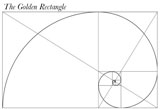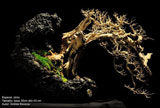Quiet Crow Bonsai
A Collection of Stellar Bonsai MusingsArticles
Language of Critique
We already introduced the critique process is especially beneficial for bonsai artists because it provides feedback from the audience’s point of view. Let's cover the Language of Critique to provide you with the vocabulary and knowledge necessary to critique bonsai
Visual Elements
The visual elements are the building blocks of art creation. They can be analyzed, organized, and manipulated by artists. They are the visual language of art. Line and form are the elements that are the greatest concern to the bonsai artist.
- Line:
- Expressed in bonsai by the movement of the trunk and determines the style of the tree.
- Form:
- Expresses by the length, position, and arrangement of the branches, the form is the outline of the tree and helps express the tree’s genus, age, and condition. Form refers to three-dimensional shapes that have length, width and depth. In fact, forms are three-dimensional. They take up space. You can hold them, and walk around them. A bonsai artist uses form three-dimensionally.
Artistic Principles of Bonsai Design
The artistic principles of design refer to the organization of a work of art or bonsai. Each principle interprets how an artist uses the visual elements, composition and design to express their feelings and ideas. By studying these, your own work will become more sophisticated as you will begin to apply this new knowledge to your own bonsai.
Proportion
Proportion refers to one piece of an object in relation to the rest of the object.
In ancient Greece, mathematicians sought the perfect proportional measurement. It became known as
the "Golden Ratio" or "Divine Proportion". (For more detail see page 17 of Basic Bonsai Design by
David De Groot.)
Since the word "proportion" means one part in relation to another. All people have a sense of
proportion concerning themselves as compared to others. "My nose is too long for my face". "She has long legs".
"His eyes are wide set." All of these comments reinforce the idea that we see and have opinions
about the relationships between one thing compared to another. Bonsai artists use their sense of
proportion to make statements or express the illusion of a large, aged tree in nature.
Balance
We use balance as a way of controlling gravity. Bonsai artists use vertical and horizontal mass
as well as negative and positive mass. The entire composition of the tree in its container must be
visually balanced.
As humans we experience the need for balance in our everyday life. We use it as we walk or run and to
carry things. Balance is also necessary in other ways. We need to balance our awake and sleeping periods,
our food intake and energy exports, and relaxation and stress. Balance is also important to a work of art.
A balanced artwork leaves the viewer feeling "visually comfortable". On the other hand, a work that is
not balanced creates a sense of visual stress.
Unity
The principle of unity is important to works of art. The artist would like the viewer to
see the completed work as "finished". The visual elements used to create the artwork should
appear to create a "whole" composition. Unity requires that trees have consistent lines in the
trunks and branches to create a sense of harmony. When you look at a work and sense that the
piece is complete, you can appreciate the importance of unity.
"Unity" in art results from a combination of related visual elements creating a pleasing work for the eye.
"Unity" infers that the work of art is presented as a "whole". When a work of art has "Unity", the
viewer sees the work as a whole, not in separate sections.
In the final segment we put it all together. We will describe Critique as Process, a way of organizing the facts and your thoughts about a particular bonsai. Read More



